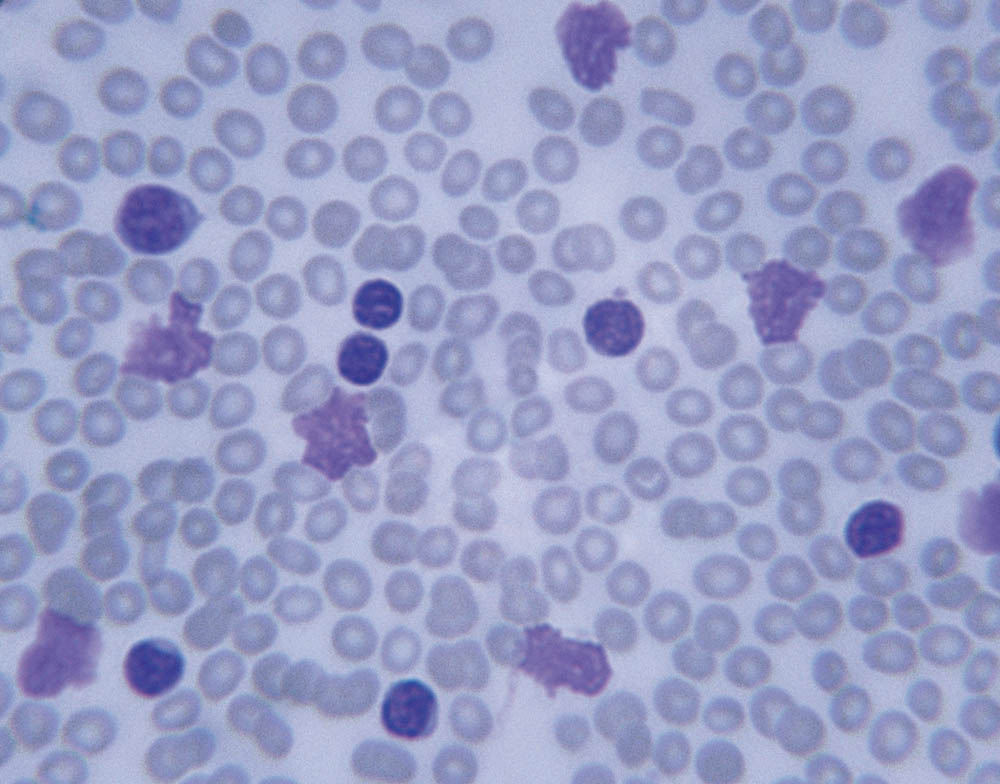Medically reviewed by Martha Wadleigh, MD
Leukemia arises from malfunctions in stem cells within the bone marrow that cause abnormal white blood cells to flood into the bloodstream. Leukemias are classified as either myelogenous (also called myeloid) or lymphocytic, depending on which types of white blood cells are affected.
What is the difference between these types of leukemia?
If the abnormal cells are primarily granulocytes (which destroy bacteria) or monocytes (which produce large cells called macrophages, which digest foreign substances and diseased cells), the leukemia is classified as myelogenous.
If the abnormal cells are mainly lymphocytes (which orchestrate the immune system’s response to infection or disease), the leukemia is classified as lymphocytic.
In either case, the effect of the disease is a decline in the body’s ability to protect itself from infection. Acute leukemias occur when the bone marrow produces immature white cells, and chronic leukemias occur when the marrow produces mature cells.

The most common forms of leukemia in older adults are acute myeloid leukemia (AML) and chronic lymphocytic leukemia (CLL), with rates peaking in the seventh, eighth, and ninth decades of life. Acute lymphoblastic leukemia, by contrast, is primarily a disease of childhood, and is most common in children and adolescents up to 16 years of age.
Symptoms
Because chronic leukemia progresses relatively slowly, people with the disease may not have any symptoms in its early stages. The initial symptoms of both lymphocytic and myelogenous leukemia can include:
- fever
- fatigue
- night sweats
- swollen lymph nodes in the neck, under the arms, or in the groin
- frequent infections
- and weight loss.
However, all of these symptoms can also be caused by a variety of non-cancerous, more benign conditions.
[Read more: Adult Leukemia: Five Things You Need to Know]
How is leukemia diagnosed?
Leukemia is usually diagnosed after a blood test shows an abnormality in blood counts. To confirm the diagnosis and determine which type of the disease an individual has, doctors use a needle to withdraw a small amount of bone marrow and test it for leukemic cells, DNA alterations, and chromosomal changes.
Treatment
The treatment for leukemia, whether lymphocytic or myelogenous, depends on whether the disease is acute or chronic, the stage at which it is diagnosed, as well as a patient’s age, overall health, and general fitness.
The standard treatment options for adult acute lymphocytic leukemia (ALL) include chemotherapy, radiation therapy, stem cell transplant targeted therapy (directed against specific abnormal proteins in the cancer cells), and CAR T-cell therapy.
For adult CLL, they include chemotherapy, radiation therapy, and targeted therapy (stem cell transplants and immune system-based treatments are being tested in clinical trials).
The standard options for adult AML include chemotherapy alone or followed by a stem cell transplant once a patient is in remission. (Targeted therapies for the disease are now being studied in clinical trials.)
The first-line treatment for adult chronic myelogenous leukemia (CML) includes targeted drugs, such as imatinib, that attack an abnormal protein in the leukemia cells.
